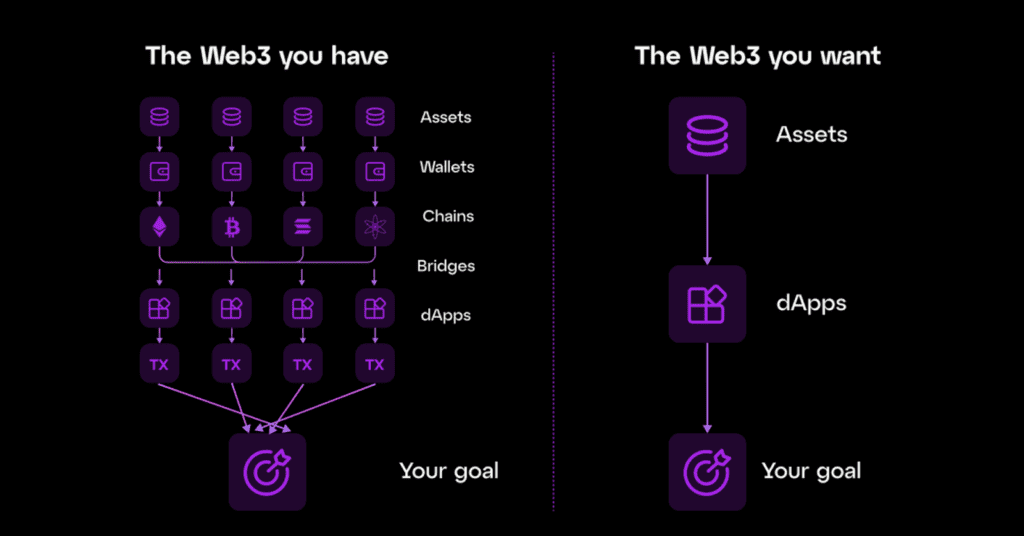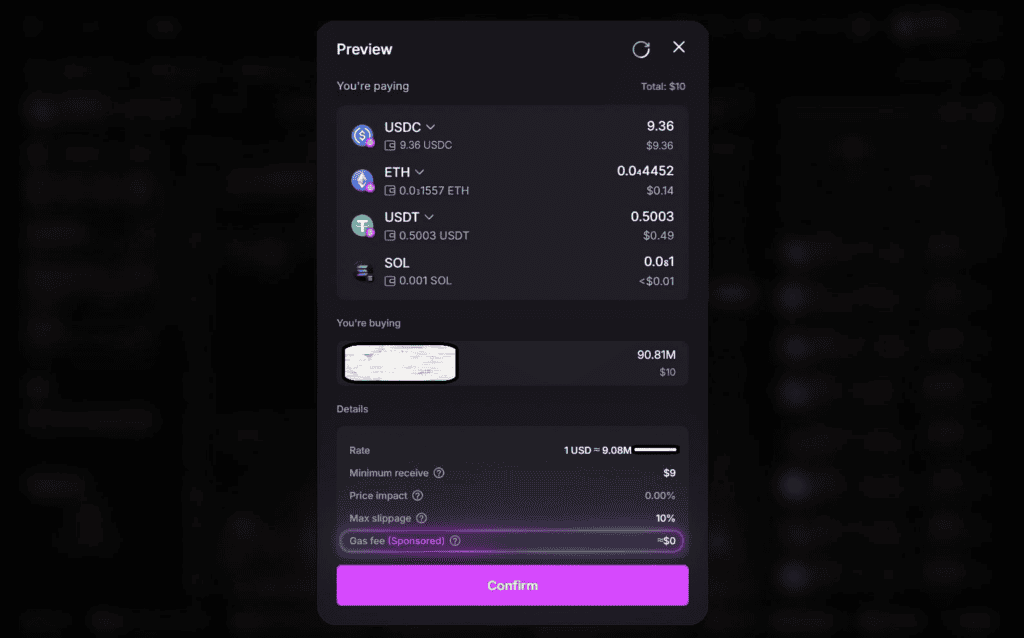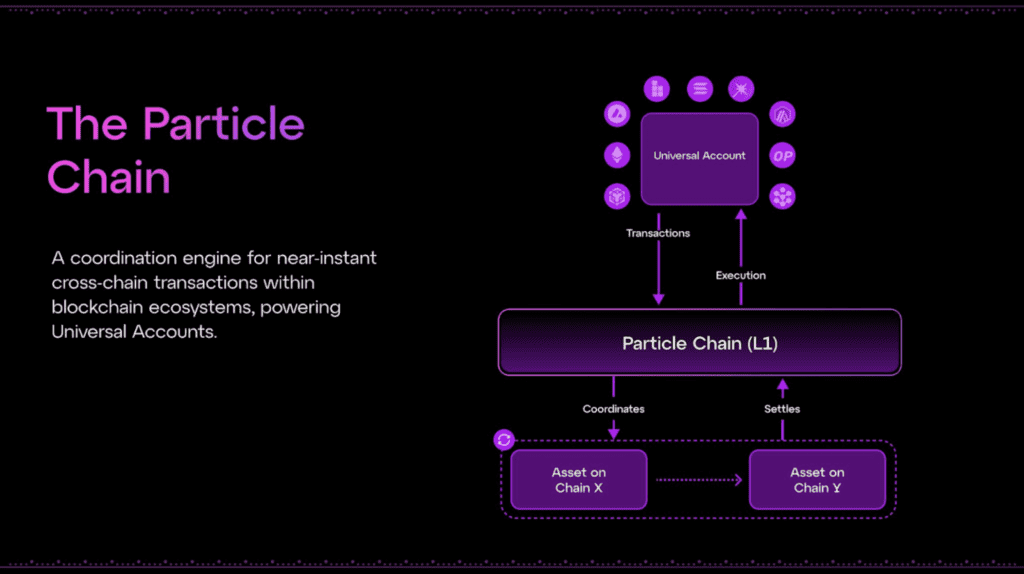
Sponsored By
Everyone was bullish a few days ago. And now everyone’s bear’ish again. The hardest part about these markets is being able to sit still.
This is a lesson I learned a long time ago from playing Poker. Sometimes the best thing to do is wait for the right hand. That means just waiting until the market conditions turn bullish.
I’ll let you guys know when I’m “risk on” again.
BTW there was a crazy earthquake in Myanmar and Thailand today. I know there are a lot of readers in Bangkok so hope you guys are all ok.
Here’s what we got today:
- New HyperLiquid Attack. And the controversial fix that saved $12M.
- Particle Network Deep Dive. An introduction to the crosschain future.
- Around the web. Walrus Protocol is live, Celo is now an L2, new DeFi primitive, and more.
Today’s email is brought to you by Particle Network — the L1 for chain abstraction.
Here’s your Edge 🗡️!
News
HyperLiquid’s $12M Near-Death Experience
An attacker almost cost HyperLiquid $12M. But now he’s sitting on a $1M loss. But the community is still angry at HyperLiquid.
A couple of weeks back, I talked about how HyperLiquid’s HLP lost $4M. Similar playbook. Different attack.
If you need a refresher, here are the basics:
- HyperLiquid is an L1 that focuses on perps.
- Hyperliquidity Provider (HLP) is the community-owned protocol vault that runs market-making strategies on HyperLiquid.
What happened? HyperLiquid lost $12M in an attack. Instead of eating the loss, they forked the protocol and changed the results of the attack. They just converted their loss into profit by themselves.
Wait, what?… Let’s unpack it.
The $JELLY token was created by Venmo co-founder Iqram Magdon-Ismail for his JellyJelly Web3 social media project. Initially, it had a market cap ~$250 million. But before the attack, the market cap was ~$20M.
The attacker opened three positions on $JELLY.
- Two long positions worth $2.15 million and $1.9 million
- A $4.1M million short position on JELLY. This position led to problems for HLP.
He then pumped the token’s price on-chain, by over 400%.
The $4M short position should’ve been liquidated immediately. But the position was so large, and liquidity so thin, that it couldn’t be unwound safely. So it was absorbed by the Hyperliquidity Provider Vault (HLP), which was supposed to liquidate large positions in a controlled manner.
But HLP couldn’t liquidate it properly. And it was sitting on $12 million in unrealized losses.
This was the second big blow in weeks. First $4M, now $12M. Confidence in HLP was cracking.
So HyperLiquid entered damage control mode.
- HyperLiquid validators voted to delist JELLY perps.
- Most users (except flagged addresses) will be reimbursed by the Hyper Foundation.
- And here’s the big one: they manually overrode the oracle price, closed the position, and turned the $12M loss into a $700K profit.
Yes, they just… changed the price.
From his long positions, the attacker managed to withdraw $6.26M before they cut him off. He’s now sitting on a ~$1M net loss, with $900K frozen on HyperLiquid.
So yeah, drama. And many of them.
#1. The Decentralization Debate.
HyperLiquid claims to be a decentralized perp DEX. But they just manually changed Oracle prices and rewrote market history in real-time.
That’s not decentralization. That’s a centralized database with extra steps.
And this isn’t just some purist’s rant—this opens the door to regulatory issues. If a team can intervene and flip a loss into a win, what’s stopping governments from demanding they freeze accounts or reverse trades?
ZachXBT is already complaining about HyperLiquid enabling North Korean hackers under the banner of censorship resistance, only to abandon those principles when their own money was on the line.
#2. Risk Management Issues
This attack exposed several issues within HyperLiquid’s risk management. There weren’t any size limits on illiquid assets. The oracle prices were easily manipulated.
These vulnerabilities should’ve been patched after the first $4M loss. Instead, they came back bigger, badder, and more expensive.
#3. Attack from exchanges.
When HLP was exposed to the $JELLY short position, Binance and OKX listed JELLY.
This was a bullish catalyst for $JELLY when HLP had a massive short position. If $JELLY had kept pumping and HyperLiquid hadn’t intervened, it might even have taken out the entire HLP Vault.
The CEXes can argue that they were just trying to capture trading volume and fees, given JELLY’s 400%+ price pump.
But it was seen as an attack from CEXes against HLP. Some rumors even suggested the attacker might be connected to the CEXes.
This was quite bad for $HYPE. It fell >20%.
Despite the chaos, HyperLiquid remains the top onchain perp DEX. And honestly, it can keep growing. The product is strong. The volumes were real.
But here’s the deal: they need to fix risk management. And they need to get
serious about decentralization—fast.
The clock is ticking.
Sponsored Deep Dive
Particle Network: Future of Crosschain Experience
There’s a joke that, by now, we might have more L1/L2 chains than active crypto users.
This is one of those instances where too many options is a bad thing (kinda like online dating, but that’s a story for a different day).
Here’s what I mean:
- Manual bridging. You can’t simply use $ETH from the Ethereum mainnet on an L2 app. Instead, you’ve got to bridge it. That’s not just annoying and time-consuming — it poses security risks as well.
- There are too many gas tokens. Every chain wants its own gas token. That means users need to buy, store, and manage many different tokens just to pay fees. It’s sort of like needing different currencies to visit different rooms in your house.
- Account and wallet fragmentation. For a user to access their full balance, they likely have to go through multiple wallets. And managing them all? That’s painful.
- Liquidity fragmentation. Some assets only exist on one chain. Others have weak liquidity. So, traders need deep liquidity pools.
Every chain is selling the exact same dream: That there’s going to be ONE dominant chain, and, of course, it’ll be theirs.
I’d rather think of chains like cities. There are always going to be many cities in different shapes and sizes, and different cities will appeal to different people.
But how do you deal with the headache that is the multichain universe? Thankfully, there’s a way out!
Chain Abstraction 101
This is a vision for a much-improved web3 end-user experience: here, the underlying technical complexities of L1s and L2s will be hidden from end users.
It’s a future in which users won’t need to care about what chain they’re on, what gas tokens to use, or whether they need to bridge funds. All of that complexity? Locked away.
It’ll be like the web2 experience we’re already used to — just with web3 under the hood.

There aren’t strict rules on how to reach this vision. There are many technical approaches in development, ranging from AggLayer to ERC-7683. It’s a rather nebulous concept.
The image below offers a solid overview of some of the approaches that currently exist.
If I were to dive into all of these chain abstraction approaches, you’d still be reading this newsletter next week. But you can find a neat report here.
For today, let’s focus on one of the most comprehensive solutions in the space.
Particle Network: L1 for Chain Abstraction
This is an L1 designed specifically for chain abstraction.
At the core of it? Universal accounts. What are they?
- They offer a single account for all chains. From Solana to the latest Ethereum L2, you can manage all your assets from a single account. Wallet-hopping is a thing of the past.
- They provide a unified balance across all chains. Got $10 USDC on Base and $10 on Arbitrum? The Particle Network treats that as $20 USDC—spendable anywhere. Bridging is abstracted away.
If you want more technical details on Universal Accounts, click here.

What’s important to remember is that their Particle account will be the single interaction point for all users. They can easily deposit funds there and then use those funds across chains.
With Particle, users will be able to take a loan against an NFT on Solana and use their proceeds to buy a memecoin on Base, all from a single account. This will massively streamline and improve user experience. (Apps that enable this aren’t live yet.)
The Particle Network has other important technical aspects as well.
- Universal liquidity. This powers the cross-chain aspects of the Network. It’s their built-in cross-chain bridging solution.
- Universal gas. Different L1s come with different gas tokens. By using Particle’s “Paymaster” users are able to pay the gas fees of a transaction with any supported token on any supported chain.
And yes, the network has its own token too.
Particle Network launched $PARTI this week. It powers their Delegated Proof-of-Stake (DPoS) consensus model.
All this theory sounds great — but where can you actually use it?
Try It Yourself: UniversalX

Meet UniversalX, the very first chain-abstracted trading platform; essentially the first app built using Universal Accounts. Here are some of the things you can already do:
- Pay for gas with any token on any chain.
- Trade any token on 16 chains (more coming) without first bridging.
- Enjoy full MEV protection (yes, your trades are safe from sandwich bots).
- View your entire asset portfolio from multiple chains through a single unified balance.
- Send any token to any chain that’s integrated by UniversalX.
- Buy any token on those same chains using cash via debit or credit card, Apple Pay, and other integrations.
Do you want to ape into Solana using $100 worth of ETH, USDC, and BTC on three different chains? That used to be a nightmare. Now it’s a mere few clicks away.
Our current fragmented multichain experience is on its way out. And the abstracted future of cross-chain apps is here. Ready to get a taste?
Let’s just say – if an IRL friend of mine wanted to use crypto, I’d be sending them straight here. It makes the whole experience so much easier (and I don’t want to become their crypto tech support).
🚀 DeFi Catalysts
Walrus Protocol, a data storage protocol from Sui, has launched the mainnet.
Napier Finance went live on Sonic. It’s curated by MEV Capital. You can earn Sonic, Napier, Rings, and Veda Points by LP or YT.
Jupiter Mobile has integrated Ledger. It’ll allow users to approve transactions from any connected Ledger device securely.
Ozean, the blockchain for RWA yield from Clearpool, partnered with Maple Finance to integrate SyrupUSDC into its Pre-Deposit Campaign and Port.
Pendle launched on Berachain. Two new pools for Infrared’s iBGT and iBERA were deployed.
Rysk Finance introduced Rysk V12. It introduced a new DeFi primitive: the first scalable, liquid, tradable covered call.
BlackRock is expanding $BUIDL to Solana. The interoperability will be handled by Wormhole.
HyperLiquid has linked HyperCore and HyperEVM. HyperCore spot assets are now available as building blocks for applications on HyperEVM.
World Liberty Financial introduced USD1, their stablecoin. It’ll be backed by dollars and custodied by BitGo.
TaoFi went live on Bittensor. It’ll allow users to bridge USDC from Ethereum to Bittensor EVM with taoUSD.
🪂 Airdrop Alpha
KelpDAO launched the early checker for the $KERNEL Season 1 airdrop. TGE is planned for early April.
mETH Protocol launched season 3 of its incentive program, Methamorphosis. They’ll provide rewards for several $cmETH activities.
Corn, an Arbitrum-powered network that aims to focus on BTCfi, has released its airdrop checker.
Particle Network launched $PARTI. If you had used UniversalX or joined any earlier Particle campaign, can now claim airdrop.
📰 Industry News
Wyoming selected LayerZero to issue WYST. It’ll be the first fiat-backed and fully-reserved stablecoin issued by a public entity in the United States.
RISC Zero introduced OP Kailua. It provides a way for existing OP Chains to integrate L2. It provides both ZK Fraud or Validity Proof options.
Celo has hard-forked to become an L2. It was an EVM-compatible proof-of-stake L1 launched in 2020.
🐦⬛ X Hits
- ZachXBT’s list of tools he uses for sleuthing.
- Scalable covered call as a primitive for DeFi.
- Guide for Proof-of-Liquidity mechanism.
- State of tokenization on Bitcoin.
- How do projects use their revenue & cash flow?
😂 Meme
Source: @boldleonidas
Until next time,
Edgy
p.s. got to make a studio ghibli version of my old profile pic! this new chatgpt is a game changer!



